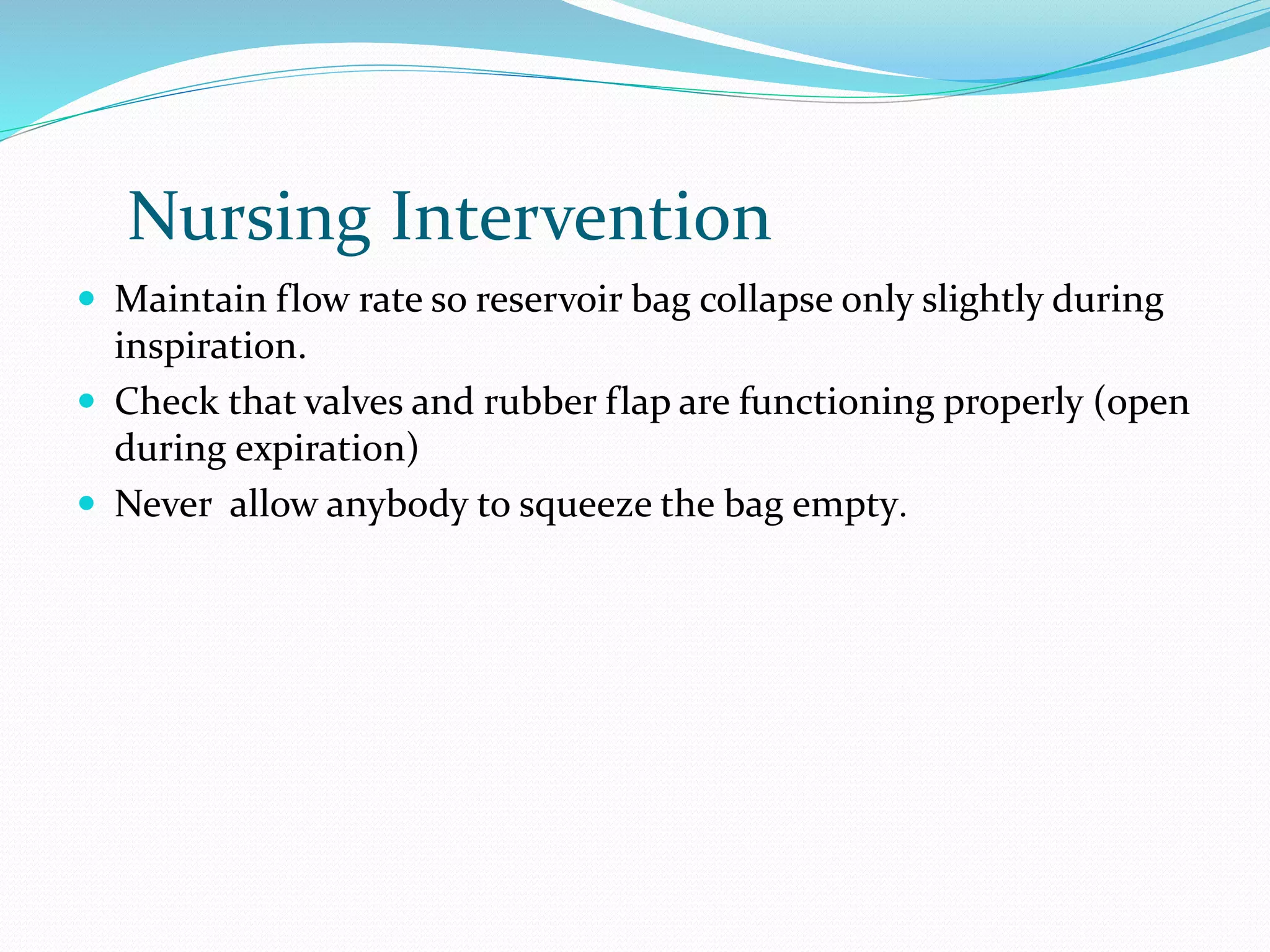This document discusses oxygen therapy and its various delivery methods. It defines oxygen therapy as the administration of oxygen at a higher concentration than found in the air. The goal is to ensure adequate oxygen delivery to tissues. Low-flow devices like nasal cannulas and masks deliver variable concentrations of oxygen under 15 L/min, while high-flow devices like venturi masks and generators deliver fixed concentrations by exceeding minute ventilation. Indications, benefits, hazards and prescribing oxygen are covered in detail.









































